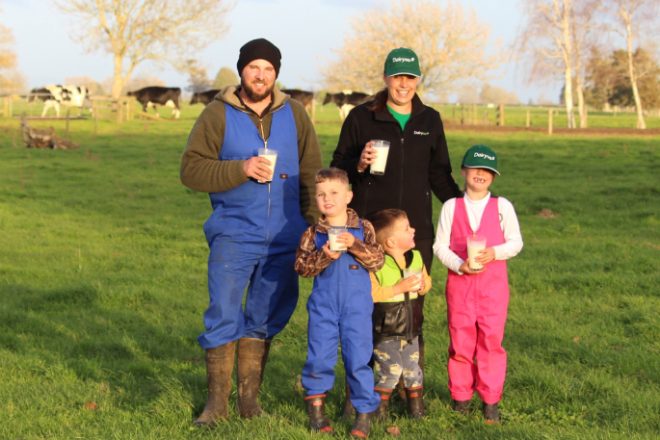乳制品行业一直是新西兰经济的重要组成部分,为当地社区提供支持,并在全球范围内提供高质量的营养。Dairynz和新西兰乳业公司协会将在6月1日的世界牛奶日庆祝这些成就。
Dairynz首席执行官坎贝尔·帕克表示,世界牛奶日是承认农民、乳品公司和整个行业对新西兰未来的积极影响的最佳时机。该日由联合国粮食及农业组织设立,凸显了牛奶和乳制品行业的全球重要性。
坎贝尔指出,新西兰农民生产的牛奶每天为9000万人提供两份半的乳制品。这一重大贡献始于农民对土地和动物的奉献,并延伸到整个供应链,使消费者、社区和国家受益。
DCANZ执行董事金伯利·克鲁瑟解释说,农民生产的高品质牛奶已转化为1500多种不同的乳制品。这些产品出口到130多个国家,占新西兰每四美元贸易收入中就有一美元。
根据金伯利的说法,乳制品行业的成功是农民、乳品公司员工和合作伙伴行业共同努力的结果。在截至2024年4月的一年中,乳制品出口创造了255亿美元的收入,为大约55,000人创造了就业机会。
奶农和公司产生的经济活动包括超过79亿美元在当地商品和服务上的支出以及乳制品加工商的50亿美元支出。奶农和加工商分别是来自所有其他行业的十大买家之一,分别占所有其他行业的三分之一和四分之一。
金伯利强调说,牛奶是营养强国,在全球粮食系统中提供29种必需营养素中的23种。这包括膳食钙供应量的48%和12%的蛋白质,而仅占卡路里的7%。在生命的各个阶段,乳制品对饮食都至关重要。
坎贝尔强调说,世界牛奶日是认可乳制品在社区中发挥的重要作用的机会,农民经常做志愿者,为当地的教育、保护、指导和紧急服务做出贡献。
金伯利补充说,乳制品行业为新西兰人提供了广泛的职业机会,从农业和乳品科学到销售和物流。凭借全球联系,充满活力的乳制品行业带来了令人兴奋的机会。





























































